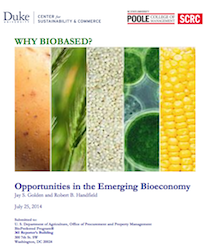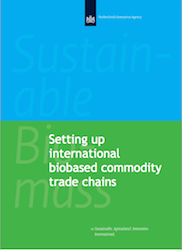According to a new case study from the Renewable Fuels Association (RFA), E85 retailers in the St. Louis area may be intentionally price gouging consumers. According to the report, during the 2014 summer driver season, the average E85 price was 12 percent  below gasoline prices at the wholesale level but one percent higher than gas prices at the retail level. The wholesale-to-retail markup on E85 was nearly twice the markup on gas. In addition, the study concluded that E85 retail prices were around $1 per gallon higher than was justified by wholesale prices for the locally available ethanol blendstock.
below gasoline prices at the wholesale level but one percent higher than gas prices at the retail level. The wholesale-to-retail markup on E85 was nearly twice the markup on gas. In addition, the study concluded that E85 retail prices were around $1 per gallon higher than was justified by wholesale prices for the locally available ethanol blendstock.
The study’s results offer “… clear support for the notion that some gasoline producers/suppliers and their franchised retailers purposely employ E85 pricing strategies meant to discourage E85 consumption and negatively influence consumer perceptions about the fuel.”
Bob Dinneen, president and CEO of the RFA, said of the case study, “It’s fairly obvious that the retailers examined in this study—all of whom are branded by one of the Big Five oil companies—don’t really want to sell E85. In many cases it appears they were pricing E85 above their branded gasoline for the sole purpose of making their gasoline prices look more attractive to the consumer. Sneaky E85 pricing strategies ultimately give oil refiners the opportunity to wrongly claim that consumers are ‘rejecting’ E85; and it gives them an opportunity to claim they can’t comply with Renewable Fuel Standard (RFS) requirements above the so-called ‘blend wall.’ This study exposes the utter hypocrisy of that argument.”
RFA tracked E85 and gasoline (E10) prices at all nine retail stations selling E85 in the St. Louis metro area. All nine stations carry the brand of one of the five largest integrated oil production and refining companies. This makes the St. Louis E85 market highly unusual because nationwide “…retail stations affiliated with a ‘Big Five’ oil company brand are four to six times less likely to offer E85 than independent or unbranded stations.”
Across more than 250 observations during the summer, the average E10 retail price was $3.45 per gallon and the average E85 retail price was $3.476 per gallon. Meanwhile, E85 was available at a local wholesale terminal for an average of $2.58 per gallon, while E10 averaged $2.93 per gallon at the wholesale level. Based on prices for locally available ethanol, hydrocarbon blendstock, RFS RIN (Renewable Identification Number) credits, and a typical markup, E85 could have been offered at retail for $2.44–2.55 per gallon.Read More









